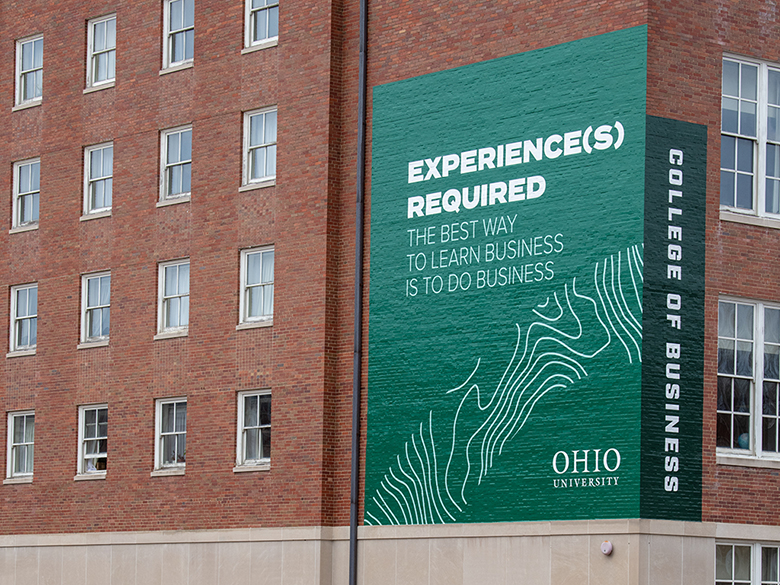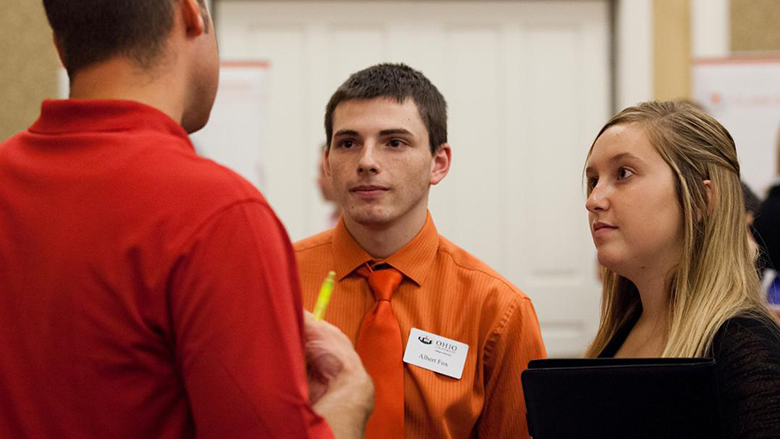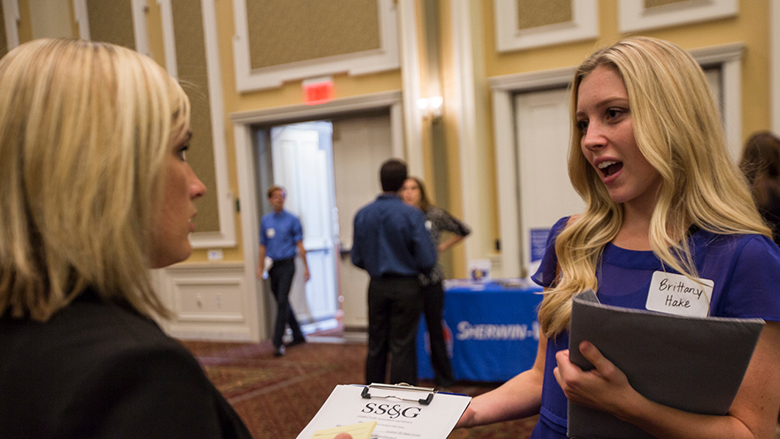The Ohio University School of Accountancy is in the business of breaking industry stereotypes. Some may be under the impression that accounting is merely “math,” and accountants are simply “scorekeepers,” but School of Accountancy Director Dr. David Stott has been working his entire adult life to change this perception of accountancy.
“I stopped telling students I want to turn them into an accountant—that has a lot of negative connotations to it—people picture green eye shades and pocket protectors and sitting in a cubicle,” explained Stott. “I've now been playing in this space for 34 years, and I have never sat in a cubicle in my life, I've never stared at a piece of paper and just added up numbers, that’s not the job. I don’t tell people I want to turn them into an accountant, I tell them I want to turn them into a business professional with accounting knowledge.”
Accounting is the bedrock of nearly every industry, according to Stott. It is the language of business and what all businesspeople use to communicate. Accountants turn data into information and provide that information to organizations so they can make informed decisions. Whether it’s a for-profit, nonprofit or governmental organization they all have some type of accounting function—someone must measure how the organization is performing and report that information.
“It's about telling stories with numbers,” said Stott. “You have to actually see the numbers and see the patterns and then be able to sort through that and figure out which numbers are relevant to decision-making and which aren’t.”
At Ohio University, students interested in accounting are offered something at every educational level. Undergraduate students in OHIO’s accounting program are taught how to critically evaluate, communicate and are immersed in foundational hands-on work. As they advance through their degrees, students are taught the importance of integrity and their reputations as accounting professionals and provided resources beyond the classroom to succeed in their field. Graduate students working toward their Masters of Accountancy and Analytics degree are prepared for the Certified Public Accountant (CPA) exam, should they choose to pursue it, and are given the opportunity to use their accounting knowledge to better organizations and society through monitoring environmental, social and governance (ESG) factors.
Both the Ohio University College of Business and School of Accountancy are accredited by the Association to Advance Collegiate Schools of Business (AACSB) , a measurement of quality that less than one percent of institutions possess—AASCB accredited institutions undergo peer reviews that analyze universities’ curriculums, learning objectives, learning outcomes and interaction with the professional world.
“You learn accounting by doing accounting.”
On the very first day of class in accounting 1010 (their first accounting course), brand new Bobcats put together an income statement and a balance sheet. Students combine their brain power and form small groups to put these financial statements together and talk through how money flows. Although this may be daunting for some first-year students, all OHIO accounting faculty emphasize the best way to learn accounting is by doing it.
“Instructors (in 1010) don't ever lecture more than about six or seven minutes at a time,” said Stott. “So, you might have a short little discussion or five-minute lecture, and then ‘let's work a problem.’ That first day there may be 15 or 20 minutes of content in a 70-minute class, the rest of the class is spent putting pencil to paper, getting your calculator out, adding things up, and seeing if it works, so that's the very much a problem-based approach.”
Accounting 1010 classes at OHIO do not use a standard textbook, they use the “MAP.” The MAP is a three-ring binder that contains a series of accounting-based problems that students work on throughout the semester—the problems get more complicated as the class goes on. This unorthodox textbook is a living, breathing document that changes each semester to keep the course dynamic. Using the MAP, faculty can ensure students are learning accounting by doing accounting. The MAP has even been lauded as an excellent learning tool by the AASCB, the premier accrediting body for colleges of business and schools of accountancy.
Learning by doing can sometimes be messy, but students are encouraged to dive in, make errors and learn from them.
“The best thing a student can do is mess it up and have to figure out what they messed up,” said Stott. “You have to figure out where you made your mistakes and that’s how you learn. That’s where it starts in 1010, and it doesn’t go away, when you’re in accounting 4600 several courses later, it’s still problem based.”
Bridging career and education
Accounting students are provided with an abundance of support resources at Ohio University beyond the classroom. Many of these resources come from faculty, most of whom are trained CPAs who know the ins and outs of the industry and serve as fantastic mentors and advisors. Additionally, OHIO’s School of Accountancy regularly brings current industry professionals to campus to engage with students and build valuable connections early.
“We have accounting nights here at Ohio University; every Wednesday night we have professionals come in and talk to students about opportunities,” said Stott. “Case in point, next week I have 40 professionals on campus to meet with 100 students about careers and opportunities in accounting. That’s something unique.”
These conversations between students and professionals yield impressive results, nearly every accounting student has a paid internship experience their junior year, and those who do will almost certainly have another their senior year. The extensive resume-building and experiential means that students are industry-ready upon graduation, and the organizations that hire them would agree—graduates have a job placement rate north of 98 percent, according to Stott.
To learn more about the School of Accountancy and accounting programs OHIO offers please visit: https://www.ohio.edu/business/ .




